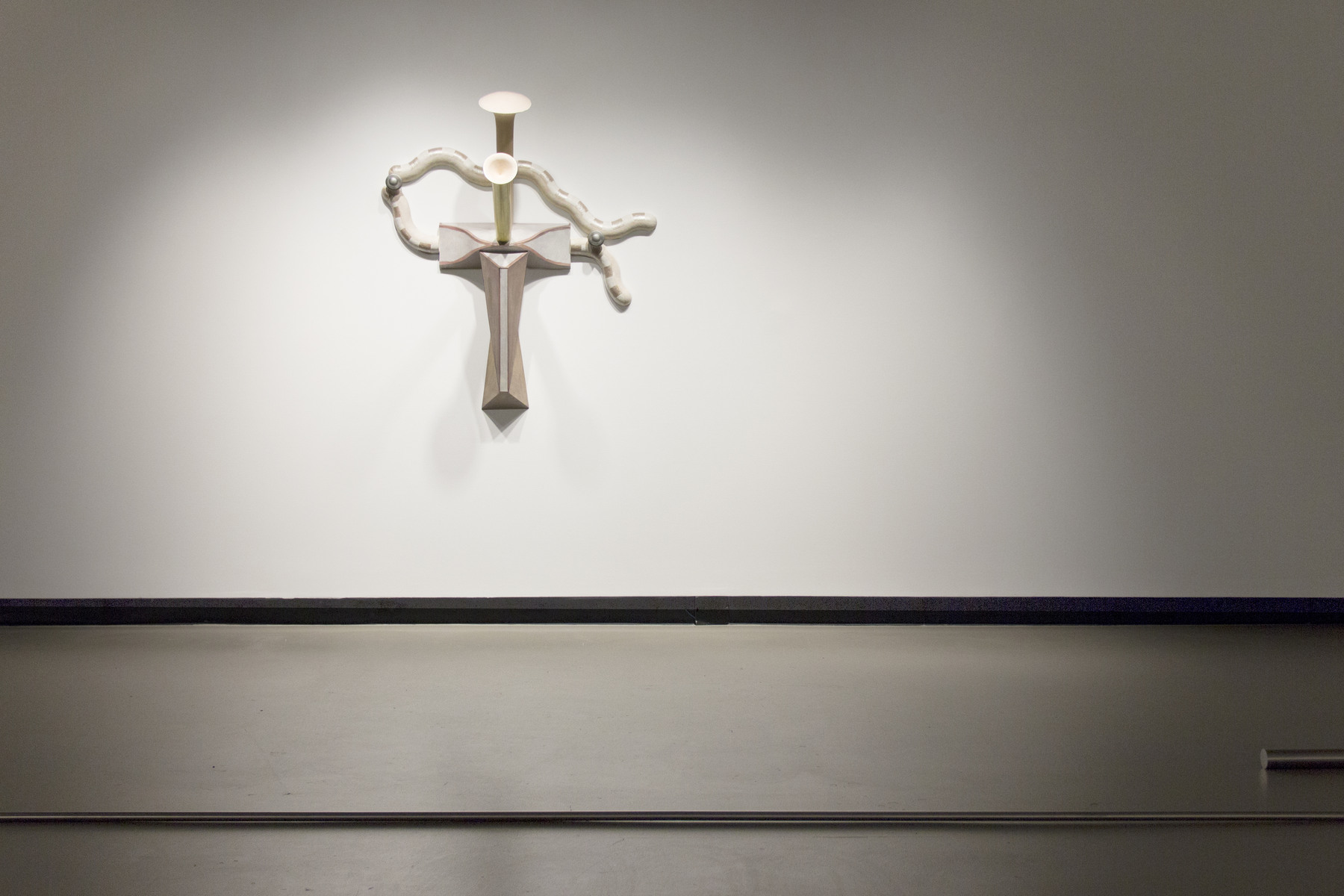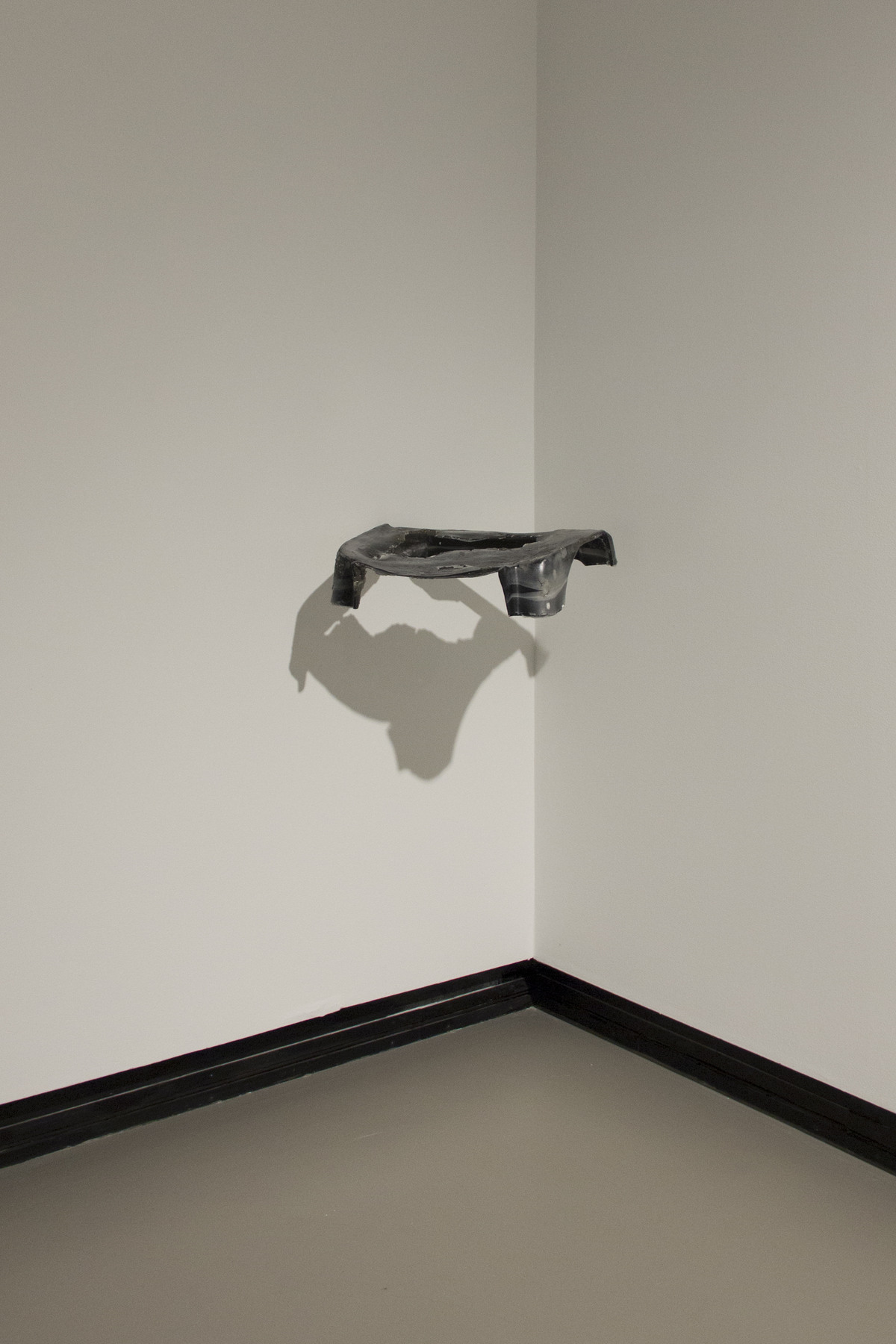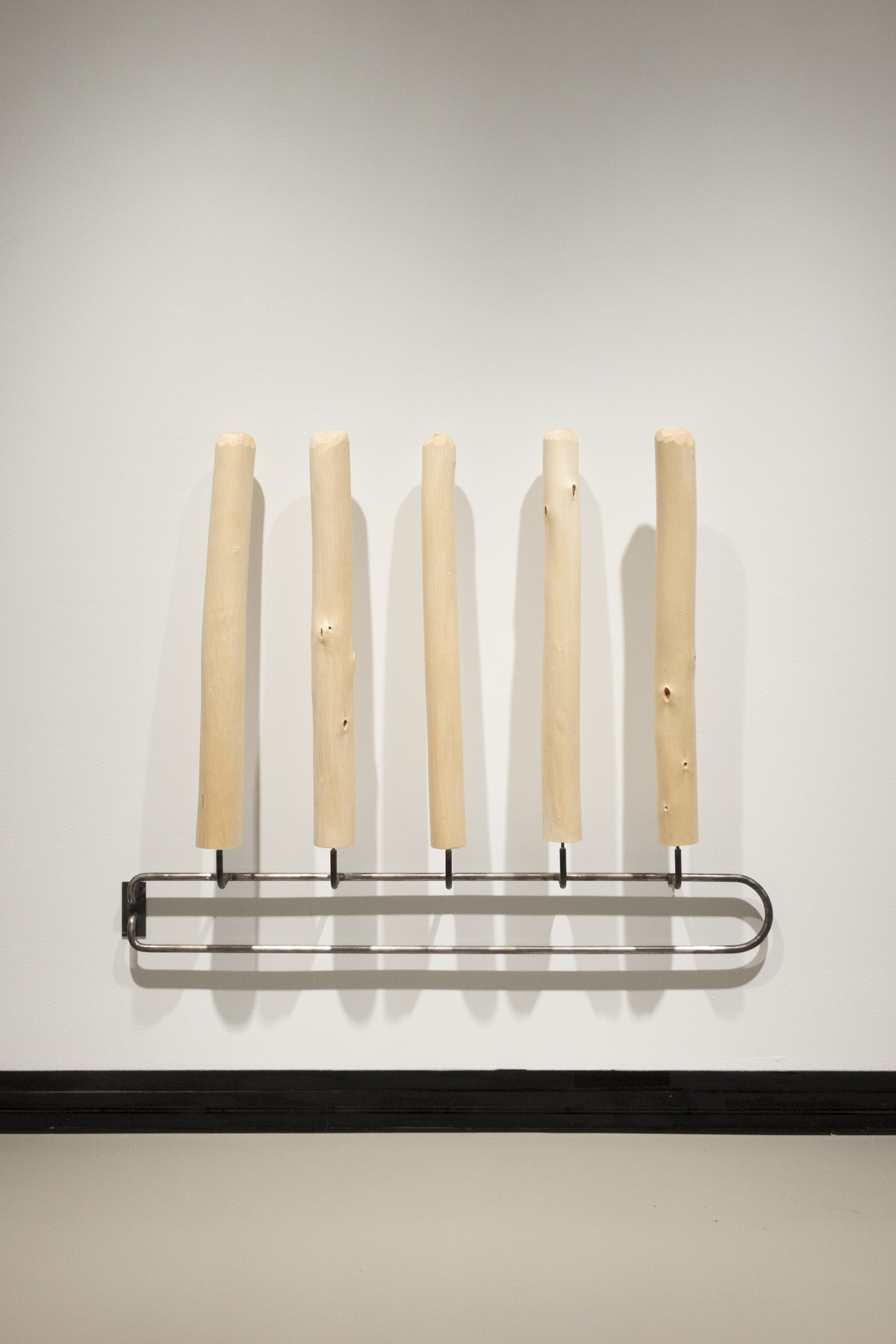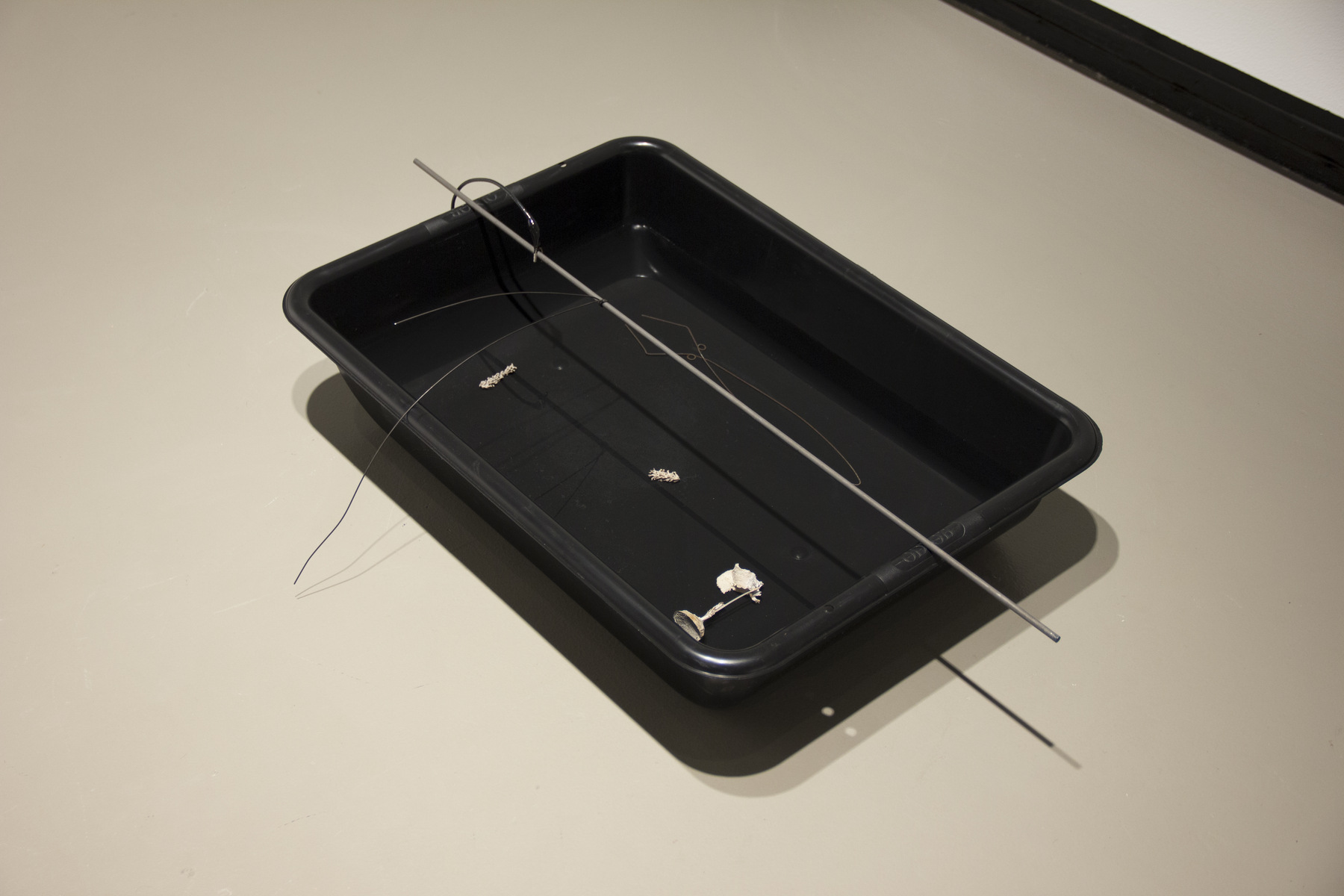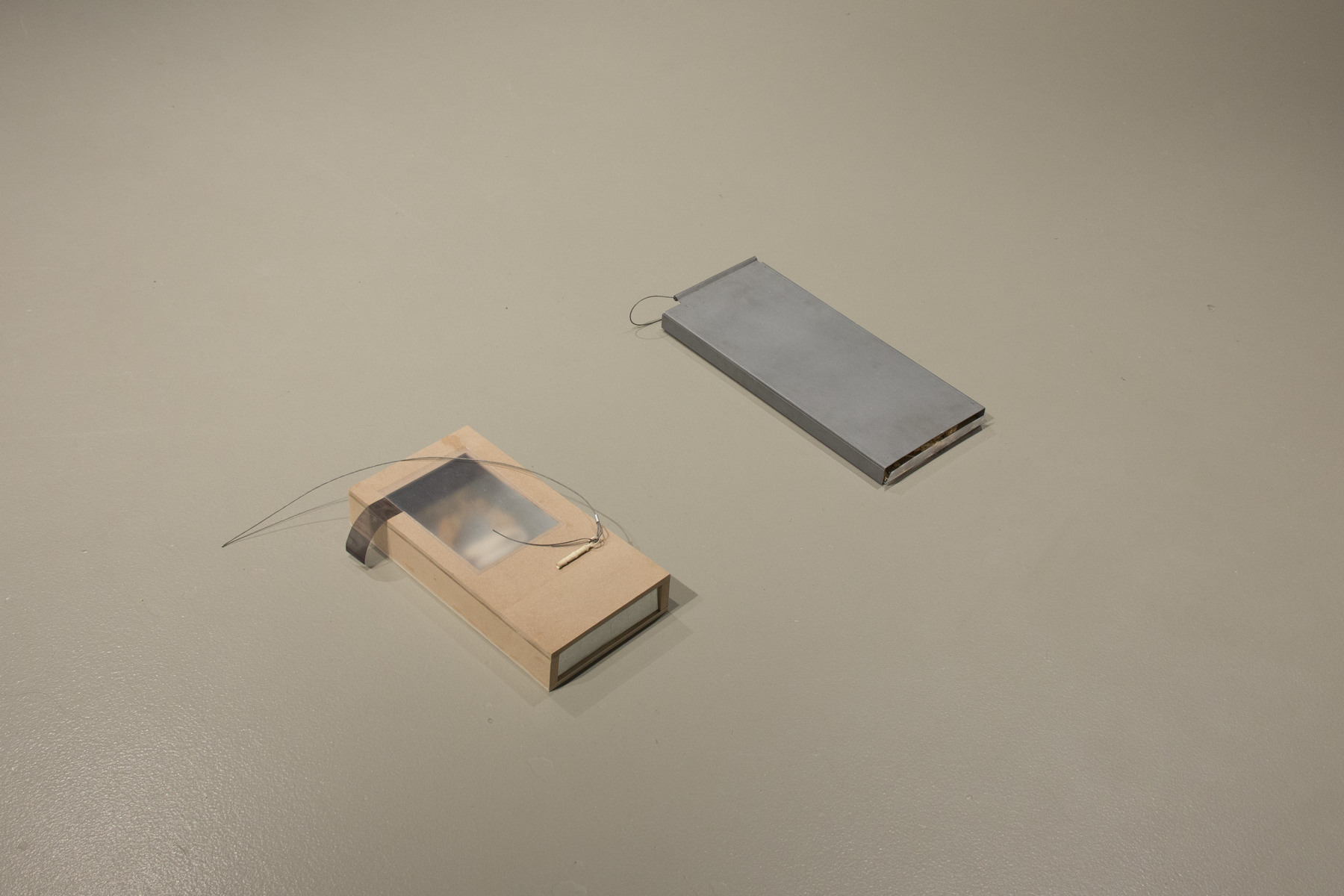Artists: Giulia Cenci, Rand Hardy, Eva Löfdahl, K.r.m. Mooney, Nick Raffel
Exhibition title: Sessile
Curated by: Josh Minkus
Venue: Clifford Gallery, Colgate University, Hamilton, New York, US
Date: November 30, 2016 – February 15, 2017
Photography: all images copyright and courtesy of the artists and Clifford Gallery
How do we start to dismantle the hubris that imagines every little thing in dumb submission to human want?
In 1931, the poet Louis MacNeice wrote in defense of his friend and occasional collaborator W.H. Auden’s predilection for the word, “It is unjust when Mr. Auden uses a word like ‘sessile’ to say he uses it because it is or sounds ‘scientific’; more likely he uses it just because it sounds.”
There are the things we understand that lead us to the things we don’t, the murky stuff we get into when we mouth the word just because it sounds, or absently rub a shell between our fingers, feeling our way into a subtler knowledge.
This generative doubting, a making that is equally a listening, troubles the fiction that imagines the human mind as indisputably in control, and the more toxic notion that the well-governing mind entitles us to the governing of everything else.
Rand Hardy’s sculpture, Corner Wrap (1996), needs a corner, just like the gallery needs artworks to fill it. More recently Hardy’s sculptures are built from cast and painted Aqua Resin. Forms appear excerpted—the bell of a horn, the knob of a porcelain insulator—or plucked from imaginary technical application, assembled into objects suggesting something between characters and tools themselves, the way wingback chairs seem like personalities.
K.r.m. Mooney’s work adopts approaches and processes derived from jewelry making, and in bodily relation to a given space and its boundaries. Mooney’s emphasis on the agency of materials troubles hierarchical sculptural values like scale and balance. Various metallurgical processes such as casting, plating, and pickling, are treated as commensurate to things like a plastic tub or sheet metal box.
Nick Raffel’s stainless steel pipes are estranged from a networked system, their circulatory function frustrated by torques and blockages. Changes in diameter signal changes in potential speed and pressure, the static and unyielding nature of the pipes at variance with the energy and speed of the things that would travel through them.
Eva Löfdahl’s work happens in intervals, and in taxonomies established within the works themselves. The parts repurposed, whether instruments of communication, or aspen trunks made curious by their apparent sameness: poised against the wall, wood unmistakably, each trunk in repetition, a singularity and a unit.
Giulia Cenci creates equivalencies of petrochemical polymers and naturally occurring processes– corrosion, blooms of mold— all of which are treated as marks, gestures, notes of color. Mass manufactured plastics are cut apart, abraded, hung to the wall as protuberances, looking weathered or decayed. The familiarity of the forms work as registration, tell us what’s missing, or been cut as nonessential, and then clotted with a batter of epoxy and clay. In several recent works Cenci lacquers fresh fruits with layers of transparent silicone. Over time the siliconized fruits change color and collapse. The material acts.
The word sessile refers to organisms that fasten themselves to a substrate and stay there, like mussels, barnacles, or coral. For the purpose of this exhibition, sessility is a way of underscoring how these various sculptures relate to the context they’re shown—the base to which they’re attached.
When observing mussels covering the rocks along a shoreline, we know the water was there and will return soon. The mussels, by staying put, articulate a boundary, and the indeterminacy of what can be called separate as land and sea.
Sessile is an exhibition concerned with the weird boundary between what is and isn’t a sculpture and with how apparently legible and contained forms have their boundaries made murky by a skepticism of things as distinctly separate, like land and sea, or mind and body, or more modestly, sculptures and the places they’re put.
Giulia Cenci, Aprile 0006, 2016, Chair fragment, marble dust, fresh clay, epoxy resin, Courtesy the Artist and SpazioA, Pistoia, 17 ¾ x 17 x 4 in
Giulia Cenci, Untitled, 2016, Ash bones, plaster, graphite powder, cristobalite, sodalite,, silicone rubber, fresh fruits, polyester resin, Dimensions variable, Courtesy the Artist and SpazioA, Pistoia
Rand Hardy, Corner Wrap, 1996, Steel and Structolite, 51 x 27 x 17 in.
Rand Hardy, The Gospel Shout, 2015, Aqua resin painted, 55 x 47 x 27 in.
Rand Hardy, SideCar Garden, 2014, Aqua resin painted, 28 x 32 x 45 in.
Eva Löfdahl, Underfrequency Holder, 2013, Paint, aluminum, bronze, 18 ½ x 69 x 33 in, Courtesy the Artist and Galerie Nordenhake, Berlin/Stockholm
Eva Löfdahl, Five-Fold Hurrah, 2009, Wood, iron, 38 ¾ x 46 ¾ x 6 in, Courtesy the Artist and Galerie Nordenhake, Berlin/Stockholm
K.r.m. Mooney, Pickle White, 2014, Polyurethane vessel, water, acid compound, cast silver, steel, 19 x 27 x 5 in, Courtesy of the Artist and Altman Siegel, San Francisco and Hester, New York
K.r.m. Mooney, Accord, A Chord III (diptych), 2016, Wood composite, vinyl, boiled steel cable, silver-plated dog whistle, woven copper, liver of sulfur, spray millet, cuttlebone, aluminum, nickel, steel panels, silver plated leader, particle board, Courtesy of the Artist and Altman Siegel, San Francisco and Hester, New York.
Nick Raffel, 2016, Stainless steel, 164 x 30 x 2 ½ in.
Nick Raffel, 2016, Stainless steel, 3 x 3 x 86 in









